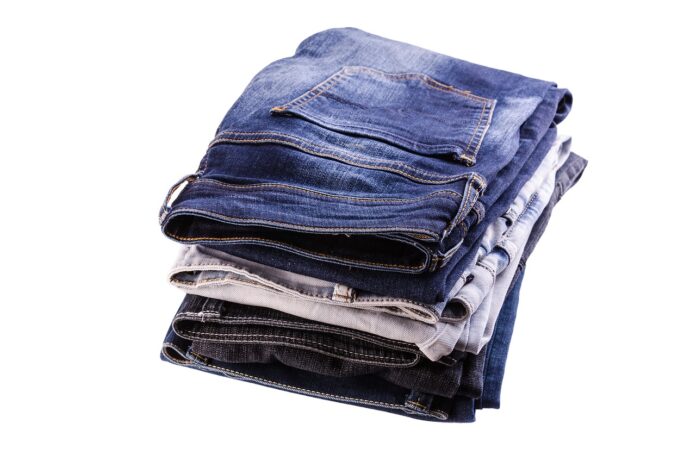Everyone loves jeans, and it’s hard to imagine life without them. Jeans are worn in sporty, casual, and even elegant styles. They are comfortable and versatile, and have been around for 160 years.
Jeans are made from a timeless material used for pants and jackets. Although it’s a thick cotton fabric, it’s very comfortable to wear. A pair of jeans is an essential item for most women, as well as many men. They can be worn almost anywhere — morning, evening, summer, winter, at work, or even at a party. The durable denim fabric is mostly used for making pants, windbreakers, fashionable sweaters, youth shirts, and baseball caps. Although fashion trends change every year, original jeans never go out of style.
The History of Jeans
Gold prospectors needed clothing that was durable and resistant to wear and tear. A young businessman named Levi Strauss, who had recently emigrated from Germany to New York, wanted to create such clothing. He experimented with different fabrics, and in 1873, Levi Strauss, along with his partner Jacob Davis, patented jeans that were reinforced with stitches at high-stress points like pockets and around the zipper.
Additionally, the pants had metal rivets to prevent tearing. This is how the Levi Strauss & Co. company was born. Initially, jeans had two front pockets and one back pocket. Over time, the number of pockets increased by two: one more was added to the back, and a small pocket was sewn inside one of the front pockets, originally intended for storing watches.
The first city where this material was made was Genoa (from the French “Gênes,” which resembles the word “jeans”). A similar material was soon created by tailors from the French town of Nîmes. In Europe, it became known as “de Nîmes” or “from Nîmes,” which is where the term “denim” comes from.
Jeans from Genoa were initially considered a medium-quality material suitable for making workwear, while denim was considered of higher quality. Over time, “jeans” and “denim” became synonymous, and today these terms are used interchangeably.
It’s possible that jeans wouldn’t have become so popular without Western movies.
In the 1930s, Hollywood cowboys began wearing jeans, and the effect was immediate. Every guy wanted to look like a cowboy. Moreover, not only men — although jeans were originally considered a men’s garment — women also became interested. As the popularity of jeans crossed into women’s fashion, female models began to appear.
In 1930, Vogue magazine featured an ad with two women posing in tight jeans. The session was called “Western Chic.” Marlon Brando wore jeans in the movie “The Wild One” (1953), a story about a motorcycle gang terrorizing nearby towns. Jeans also became a symbol of youthful rebellion.
In 1955, James Dean wore jeans in the film “Rebel Without a Cause,” prompting young people seeking freedom and independence to rush to stores in search of their own pair. As a result, jeans were banned in schools and some universities (such as Stanford).
Interesting Facts
- Jeans were originally associated mostly with the working class.
- The average American owns seven pairs of jeans.
- The most expensive jeans in the world:
- Levi Strauss & Co. 501 – $60,000
- Dussault Apparel Thrashed Denim – $250,000. These jeans are made with 18-carat gold, diamonds, and rubies. They take a long time to make due to the material used, and the washing process alone requires 13 cycles.
- Secret Circus – $1,300,000. Secret Circus Clothing created the most expensive jeans in the world. Made in Los Angeles, they were first showcased at London Fashion Week. Their price is linked to the number and quality of diamonds used to decorate them.
- The longest jeans in the world are 68 meters long, 35 meters wide, and weigh up to 3 tons! They were made in Japan. It’s still unclear why they were created, but their size is impressive.
- A kilogram of cotton: It takes about a kilogram of cotton to produce one pair of jeans.
- Jeans ban: In the 1960s, thanks to “The Wild One,” many American schools, theaters, and restaurants banned jeans, recognizing them as a symbol of rebellion and revolution.
- Over 2.5 billion pairs: More than 2.5 billion pairs of jeans are produced worldwide each year.
- The small pocket in jeans: The small pocket was originally designed to store pocket watches.
- The first jeans advertisement: Jeans were first advertised between 1920 and 1930. The pants were, of course, presented as the ideal clothing for the working class.
- The first women’s jeans: Levi Strauss and Co. introduced the Lady Levi’s model in 1934. Unfortunately, these women’s jeans were considered indecent.
Fashion comes and goes, but this rule does not apply to denim clothing. No designer has ever failed to use this material in their career. Whether they are distressed, patched, embroidered, or adorned with ruffles, jeans will never become boring
